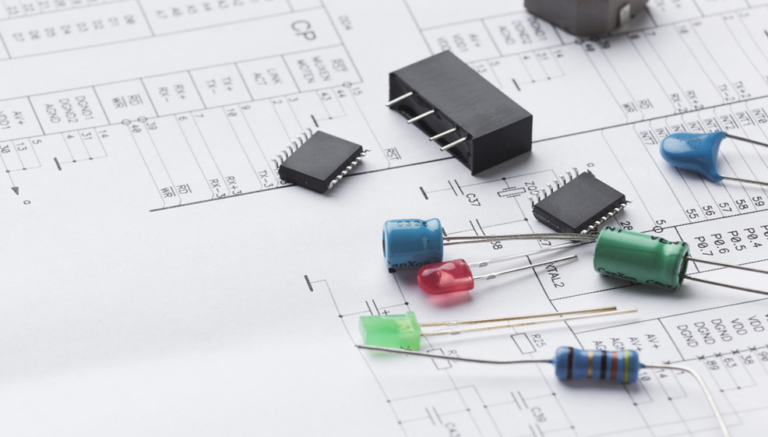Laser diode drivers are unique components in the photonics industry, providing precise control over laser diodes. These drivers are fundamental for many laser-based applications, spanning from telecommunications to medical diagnostics. This article explores the diverse industry applications of laser diode drivers, shedding light on their significance and transformative impact across various sectors.
What are Laser Diode Drivers?
Laser diode drivers are electronic devices designed to supply the correct current and voltage necessary to operate laser diodes. These drivers are crucial for maintaining the performance, stability, and longevity of laser diodes. They regulate the power output, ensuring the laser operates within safe parameters and preventing damage from electrical surges.
The key functions of laser diode drivers are current regulation, temperature control and modulation. Current regulation is to ensure a steady current supply to maintain consistent laser output. Temperature control is a crucial function by integrating thermoelectric coolers or other temperature management systems to stabilize the laser diode. Modulation is to enable over the laser’s intensity, frequency and pulse width in specific applications.
Industrial Manufacturing
One of the most significant applications of laser diode drivers is in industrial manufacturing. Laser technology has revolutionized manufacturing processes, offering unmatched precision and efficiency.
1. Material Processing: Laser diode drivers are essential in laser cutting, engraving, welding, and marking. They enable precise control over the laser’s power and focus, allowing for intricate designs and high-quality finishes. Industries such as automotive, aerospace, and electronics rely on these processes for producing parts with exacting standards.
Laser cutting, for instance, uses high-powered lasers to cut materials with remarkable precision. The laser diode driver controls the intensity and movement of the laser beam, enabling it to cut through metals, plastics, and other materials with minimal waste and high accuracy. This precision is crucial in producing components for complex machinery and electronics, where even slight deviations can lead to malfunctions.
In laser engraving and marking, laser diode drivers allow for detailed and permanent markings on a variety of surfaces. This is particularly useful in product labeling, serial number engraving, and artistic designs. The automotive industry, for example, uses laser marking to engrave identification numbers on parts, ensuring traceability and quality control.
2. 3D Printing: In additive manufacturing, particularly in metal 3D printing, laser diode drivers are crucial. They control the laser used to sinter or melt the material, ensuring precise layer-by-layer construction of components. This application is particularly important in creating complex geometries and custom parts for various industries.
Selective Laser Melting (SLM) and Direct Metal Laser Sintering (DMLS) are common 3D printing techniques that rely heavily on laser diode drivers. These processes involve using a high-powered laser to fuse powdered metal into solid objects. The laser diode driver ensures that the laser delivers consistent power and accuracy, resulting in high-quality, strong, and durable parts. This technology is widely used in aerospace for producing lightweight yet strong components, as well as in the medical field for custom implants and prosthetics.
Telecommunications
In telecommunications, laser diode drivers are integral to the functioning of fiber optic communication systems. They drive the lasers that transmit data over optical fibers, ensuring high-speed and reliable communication.
1. Data Transmission: Laser diode drivers ensure the stability and modulation of laser signals in fiber optic networks. This is vital for maintaining data integrity and speed, which are critical in today’s data-driven world.
Fiber optic communication relies on laser diodes to convert electrical signals into light signals, which are then transmitted through optical fibers. Laser diode drivers control the current supplied to these diodes, ensuring they emit light at the right wavelength and intensity. This precision is essential for maintaining the high data rates and low latency required by modern internet and communication services.
2. Optical Networking: In dense wavelength division multiplexing (DWDM) systems, laser diode drivers help in controlling multiple laser wavelengths, facilitating the transmission of vast amounts of data over a single optical fiber. This technology is crucial for the backbone of modern internet and communication networks.
DWDM technology allows multiple data streams to be transmitted simultaneously over a single fiber by using different wavelengths of light. Laser diode drivers play a crucial role in this process by precisely controlling the output of each laser diode to ensure they operate at specific wavelengths. This enables efficient use of the fiber’s capacity, significantly increasing the amount of data that can be transmitted, which is essential for meeting the growing demand for high-speed internet and communication services.
Medical and Healthcare
The medical field benefits significantly from laser diode technology, with applications ranging from diagnostics to therapeutic procedures.
1. Medical Imaging: Laser diode drivers play a crucial role in medical imaging techniques such as Optical Coherence Tomography (OCT). OCT uses laser light to capture high-resolution images of biological tissues, aiding in early diagnosis and treatment planning for conditions like glaucoma and macular degeneration.
In OCT, laser diode drivers control the laser’s output to produce detailed cross-sectional images of tissues. This non-invasive technique allows doctors to examine the internal structures of the eye and other organs with remarkable clarity. The ability to detect abnormalities at an early stage is crucial for effective treatment and management of various medical conditions.
2. Surgery and Therapy: Lasers are used in various surgical procedures for their precision and minimally invasive nature. Laser diode drivers ensure the controlled delivery of laser energy in procedures such as laser eye surgery (LASIK) and laser ablation of tumors.
In LASIK, a laser is used to reshape the cornea to correct vision problems such as myopia, hyperopia, and astigmatism. Laser diode drivers control the laser’s intensity and duration, ensuring precise and safe removal of corneal tissue. Similarly, in laser ablation therapy, lasers are used to remove or destroy abnormal tissue, such as tumors. The precision offered by laser diode drivers allows for targeted treatment, minimizing damage to surrounding healthy tissue and reducing recovery times.
Defense and Aerospace
The defense and aerospace sectors utilize laser diode drivers in numerous critical applications, leveraging their precision and reliability.
1. Targeting and Rangefinding: Laser diode drivers are used in laser rangefinders and targeting systems. These systems require precise control of the laser to accurately measure distances and target objects, which is essential in both military and civilian applications.
Laser rangefinders emit a laser beam that reflects off a target and returns to the device. The time it takes for the light to return is used to calculate the distance to the target. Laser diode drivers ensure the laser emits a consistent and precise beam, allowing for accurate distance measurements. In military applications, this technology is used for targeting and guiding missiles, enhancing the accuracy and effectiveness of weapon systems.
2. LIDAR: Light Detection and Ranging (LIDAR) technology, used in mapping and autonomous vehicle navigation, relies on laser diode drivers. They control the laser pulses emitted by LIDAR systems to create detailed 3D maps of environments.
LIDAR systems emit laser pulses and measure the time it takes for the pulses to bounce back after hitting an object. This data is used to create high-resolution 3D maps of the surroundings. Laser diode drivers control the timing and intensity of the laser pulses, ensuring accurate and detailed mapping. This technology is essential for autonomous vehicles, enabling them to navigate safely and efficiently by providing real-time information about their environment.
Consumer Electronics
In the realm of consumer electronics, laser diode drivers are found in various everyday devices, enhancing their functionality and performance.
1. Optical Storage Devices: Laser diode drivers are integral to the operation of CD, DVD, and Blu-ray players. They control the laser used to read and write data on optical discs, ensuring accurate data retrieval and recording.
Optical storage devices use lasers to read and write data on discs. The laser diode driver ensures the laser operates at the correct power level and focus, allowing it to accurately read the tiny pits and lands on the disc’s surface that represent data. This precision is essential for the reliable playback of movies, music, and other media, as well as for recording data without errors.
2. Laser Printers: Laser printers use laser diode drivers to manage the laser beam that creates text and images on paper. The precision of these drivers ensures high-quality printouts, making them essential for both personal and professional use.
In laser printers, a laser beam is used to draw the image or text on a photosensitive drum, which then transfers toner to the paper to create the final print. Laser diode drivers control the movement and intensity of the laser beam, ensuring it accurately reproduces the desired image or text. This results in sharp, clear printouts with high resolution and consistency.
Research and Development
In research and development, laser diode drivers are indispensable tools for scientific experimentation and innovation.
1. Spectroscopy: Laser diode drivers are used in spectroscopic techniques to analyze the composition of materials. They enable precise control over the laser’s wavelength and intensity, facilitating accurate measurements in chemical and physical research.
Spectroscopy involves the study of the interaction between light and matter. Laser diode drivers control the laser’s output to produce specific wavelengths of light, which are then used to analyze materials. This technique is widely used in fields such as chemistry, physics, and biology to identify substances, study molecular structures, and investigate various properties of materials.
2. Quantum Computing: Emerging fields like quantum computing also benefit from laser diode drivers. They are used to manipulate quantum bits (qubits) with high precision, paving the way for advancements in this revolutionary technology.
Quantum computing relies on the principles of quantum mechanics to perform complex calculations at unprecedented speeds. Laser diode drivers control the lasers used to manipulate qubits, ensuring precise and accurate operations. This level of control is crucial for maintaining the coherence and stability of qubits, which are essential for the reliable operation of quantum computers.
Laser diode drivers are the unsung heroes behind many of the technological advancements we see today. Their ability to precisely control laser diodes makes them indispensable in a wide range of industries, from manufacturing and telecommunications to medical diagnostics and beyond. The precision and stability offered by these drivers enable innovations and efficiencies that would be impossible otherwise. Here’s a recap of their varied industry applications:
- Industrial Manufacturing: Enabling precise laser cutting, engraving, welding, marking, and 3D printing, leading to high-quality, intricate designs and robust components.
- Telecommunications: Ensuring high-speed, reliable data transmission in fiber optic communication systems and supporting complex DWDM systems.
- Medical and Healthcare: Facilitating advanced imaging techniques like OCT and enabling precise, minimally invasive surgical procedures.
- Defense and Aerospace: Enhancing targeting, rangefinding, and LIDAR technologies, which are crucial for navigation, mapping, and military applications.
- Consumer Electronics: Improving the functionality and performance of optical storage devices and laser printers, leading to high-quality media playback and printing.
- Research and Development: Supporting spectroscopy and quantum computing research with precise control over laser outputs, driving scientific innovation and technological breakthroughs.
As technology continues to evolve, the applications of laser diode drivers are likely to expand further, driving innovation and efficiency across various sectors. Their role in the ongoing advancement of photonics and related technologies underscores their importance as foundational components in




